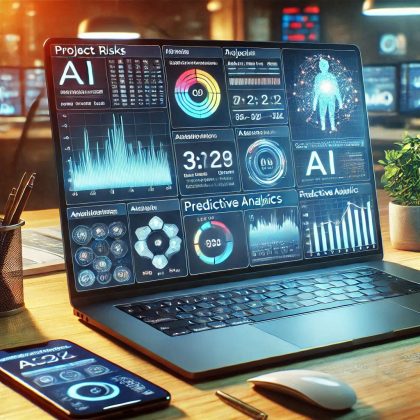
Construction sites are inherently hazardous environments, with multiple risks arising from heavy machinery, high-altitude tasks, and the dynamic nature of operations. Despite strict safety protocols, accidents and risks persist. This is where Artificial Intelligence (AI) is transforming the game, offering advanced solutions for safety and risk management on construction sites.
AI systems can proactively identify potential risks by analyzing vast amounts of data collected from sensors, cameras, and historical project records. Machine learning algorithms process this data to predict safety hazards, such as structural weaknesses, equipment malfunctions, or unsafe worker behaviors.
For example, AI-powered predictive models can flag areas prone to collapses based on soil conditions, stress levels in materials, or weather data. Early risk identification enables teams to take preventative measures, reducing the likelihood of incidents.
AI-powered computer vision systems are revolutionizing how safety is monitored in real time. Cameras installed on sites, integrated with AI, can detect unsafe actions like workers not wearing proper personal protective equipment (PPE) or entering restricted zones. Alerts are then sent to supervisors to address these issues immediately.
Drones equipped with AI enhance surveillance further, offering aerial views of the site to monitor ongoing activities and spot potential dangers in areas inaccessible to human inspectors.
Safety training is another area where AI is making a significant impact. Virtual Reality (VR) and AI simulations allow workers to experience real-life scenarios in a safe environment. These simulations can mimic scenarios like machinery failures, fires, or falls, helping workers learn how to respond effectively without being exposed to real risks.
Additionally, AI tools assess training effectiveness by tracking individual performance and identifying areas for improvement, ensuring workers are better prepared for on-site challenges.
In the event of an incident, AI can streamline emergency response efforts. AI-powered systems can guide evacuation processes by using real-time site data to identify the safest routes and alert workers accordingly. These systems can also help coordinate first responders by providing accurate location data of injured workers.
AI consolidates data from multiple sources—such as IoT sensors, project management software, and safety inspections—to provide actionable insights. By analyzing trends and patterns, AI systems help construction managers make informed decisions to enhance safety protocols and optimize site operations.
The integration of AI in construction site safety and risk management is only beginning. As AI technologies continue to evolve, we can expect further advancements, such as wearable devices with embedded AI for real-time health monitoring, advanced robotics to handle hazardous tasks, and even autonomous construction equipment designed to minimize human error.
By adopting AI-driven solutions, the construction industry can significantly reduce accidents, improve worker safety, and create a more efficient, risk-free work environment.

In today’s fast-paced and interconnected world, managing risks in complex projects is a daunting challenge. From supply chain disruptions and regulatory compliance to technical failures, project managers face a myriad of uncertainties that can jeopardize timelines and budgets. This is where artificial intelligence (AI) steps in, offering innovative tools to identify, analyze, and mitigate risks more effectively than ever before.
AI leverages advanced technologies like machine learning (ML), natural language processing (NLP), and predictive analytics to provide comprehensive risk management solutions. Here are some key areas where AI is making a difference:
The future of risk management lies in the integration of AI with advanced technologies like blockchain, IoT, and digital twins. These combinations will enable:
AI-driven risk management is revolutionizing how complex projects are planned and executed. By identifying potential risks early, providing actionable insights, and enabling data-driven decisions, AI enhances project resilience and success rates. However, to fully leverage these benefits, organizations must address challenges like data quality and skill gaps.
As AI technology continues to advance, its role in risk management will only grow, helping project managers navigate uncertainties with confidence and precision.